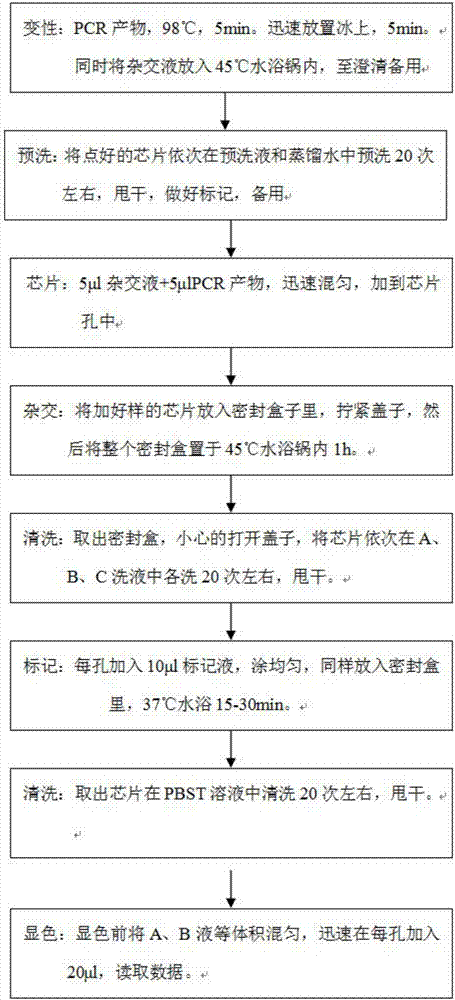Kit for quickly detecting drug resistance gene of pneumophila pathogenic bacteria
A technology of drug-resistant genes and pathogenic bacteria, applied in the field of gene chips, can solve the problems that treatment can only rely on empirical treatment, aggravate drug-resistant strains, and discontinue
- Summary
- Abstract
- Description
- Claims
- Application Information
AI Technical Summary
Problems solved by technology
Method used
Image
Examples
Embodiment Construction
[0113] Materials and Methods
[0114] 1. Experimental materials
[0115] 1. Drug-resistant strains
[0116] The drug-resistant strains involved in this experiment came from the drug-resistant strains collected by our research group earlier (including 21 cases of Klebsiella pneumoniae and Pseudomonas aeruginosa, 14 cases of Acinetobacter baumannii and 8 cases of Escherichia coli). Inactivated drug-resistant strains donated by the Institute of Radiation and Radiation Medicine, Academy of Military Medical Sciences (including KPC-producing Klebsiella pneumoniae, NDM1-producing Enterobacter, MRSA strains and VRE strains)
[0117] 2. Main instruments and reagents
[0118] Table 1-2 Instruments used in the experiment
[0119]
[0120]
PUM
 Login to View More
Login to View More Abstract
Description
Claims
Application Information
 Login to View More
Login to View More - R&D
- Intellectual Property
- Life Sciences
- Materials
- Tech Scout
- Unparalleled Data Quality
- Higher Quality Content
- 60% Fewer Hallucinations
Browse by: Latest US Patents, China's latest patents, Technical Efficacy Thesaurus, Application Domain, Technology Topic, Popular Technical Reports.
© 2025 PatSnap. All rights reserved.Legal|Privacy policy|Modern Slavery Act Transparency Statement|Sitemap|About US| Contact US: help@patsnap.com



